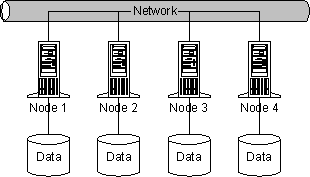In the current trend of Application Development and Automation Practices immediate action which are taken against customer data within a Short time span or visualize their application current Status From Log data will benefit the customer to save their Pockets on vulnerable activities.
LogStash been bundled with many Open Source log Processor Features. Application logs like Apache, Collectd , Ganglia and log4j etc. Other than this Logstash can also able to Process all types of System logs, webserver logs, error logs, application logs and just about anything you can throw at it.
LogStash is Developed with Combination of Java and Ruby. Its an opensource you can vist the Logstash in below url
Github Url : - https://github.com/elasticsearch/logstash
LogStash been Mainly Falls under Four categories
1) Input
2) Codec
3) Filter
4) Output
Logstash Prerequisties:-
The only prerequisite required by Logstash is a Java runtime. It is recommended to run a recent version of Java in order to ensure the greatest success in running Logstash.
Untar the Logstash File
Now type something into your command prompt, and you will see it output by Logstash
Here we ran logstash with stdin and stdout. So what text you are typing in command line shows as output below in Structured format.
Life of an Event :
Inputs, outputs, codecs and filters are the core concepts of logstash.
Inputs are the main mechanism for passing log data to logstash.
- file - read file from a file system. Like the output of tail commandn in linux.
- syslog - To parse syslog messages.
- grok - Grok Parse the arbitrary text and structure the data.
- drop - drop an event completely ex: debug events
- csv
- elasticsearch
- json
- http
- cloudwatch
Paste the Below contents in conf file.
input {
file {
path => "/var/log/apache2/access_log"
start_position => beginning
}
}
filter {
if [path] =~ "access" {
mutate { replace => { "type" => "apache_access" } }
grok {
match => { "message" => "%{COMBINEDAPACHELOG}" }
}
}
date {
match => [ "timestamp" , "dd/MMM/yyyy:HH:mm:ss Z" ]
}
}
output {
stdout { codec => rubydebug }
}
Once you paste and save the file run logstash as bin/logstash -f opensourcecircle-apache.conf.
You Should able to see the output data in Command line.
We can also add Elasticsearch to save the log data by adding this configuration in output section by :-
elasticsearch { host => localhost }
Now the logstash open the configured apache access log file and start to process the events encountered. You can adjust the path of log file defined for apache access log.
Points to Note:-
1) The output lines been stashed with the type "field" set to "apache-access" (By the configuration line in filter as type "apache_access").
2) grok filter match the standard apache log format and split the data into separate fields.
3) Logstash not reprocess the events which were already encountered in the access log file and its able to save its positions in files and only process the new line when they are added.







